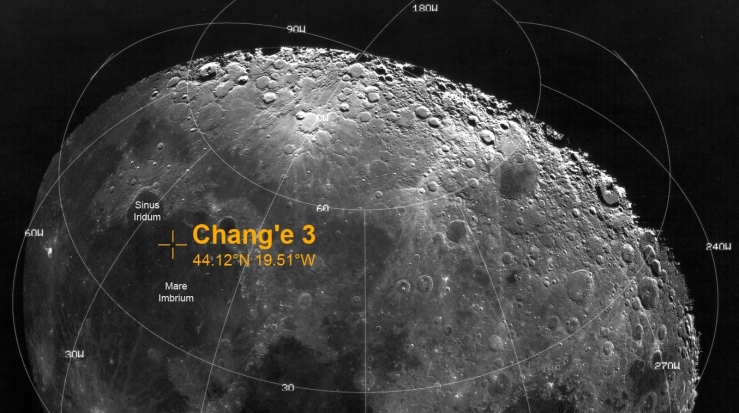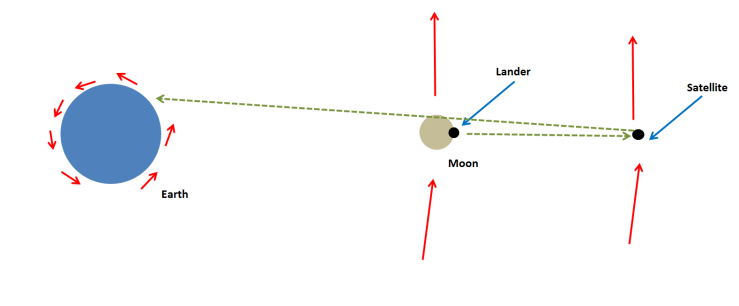On 18 November two Chinese astronauts, Jing Haipeng and Chen Dong, landed back on Earth after spending 33 days in space, an event which was hardly reported in the western media. During their mission they spent 30 days aboard the Tiangong-2 space station.
Image from the Chinese National Space Administration
Tiangong-2, shown in the mission patch above, is the second space station launched by China and, compared to the International Space Station (ISS), it is relatively small. It measures only 10 metres in length by 4 metres in diameter and is designed to accommodate a crew of two astronauts, whereas the ISS normally has a crew of six.
However, as I’ll discuss later, this mission is only one step in the Chinese space programme. China plans to launch a much larger space station by 2020 and put astronauts on the Moon during the 2030s.
Overview of previous Chinese missions
On 15 October 2003, Yang Liwei stepped into the Shenzhou 5 spacecraft and shortly after take off went into orbit to become the first Chinese astronaut. China then became only the third nation in the world, after Russia and the United States, to have their own space programme capable of putting a human into orbit without the assistance of any other nation.
Yang Liwei – the first Chinese astronaut – image from Wikimedia Commons
Since that first historic flight China has launched a further five manned space missions. The last three missions, Shenzhou 9, 10 and 11 have all docked with Chinese space stations, of which there have been two: Tiangong-1 and Tiangong-2. Tiangong is the Chinese for ‘heavenly palace’, which I think is a very appropriate name for a space station!
Forthcoming missions
In April 2017 Tiangong-2 will be visited by an unmanned supply spacecraft and later on in the year Shenzhou 12 will carry two astronauts to the resupplied space station (GB Times 2016).
In 2020 China plans to build a larger 60 tonne space station. This will be too large to be launched on a single rocket, so the various components or modules will be launched on different rockets and the space station will be assembled in orbit. I can only imagine what a feat this will be ;-). Once assembled, this will enable Chinese astronauts to have a greater manned presence in space. It could eventually lead to a more or less permanently manned Chinese space station, in the same way that the International Space Station (shown below) is permanently manned with crews rotating every few months.
Image from NASA
One reason the Chinese are going it alone with their own space station is that they are frozen out of any participation in the ISS by the United States, which fears the military nature of the Chinese space programme. In 2011 Congress passed a law prohibiting any official American contact with the Chinese space program due to concerns about national security. Interestingly, according to the Guardian (2016), China is planning to involve other counties in its space programme.
Chinese missions to the Moon
China has already sent three space probes to the Moon. The first two, Chang’e 1 and Chang’e 2, both orbited the Moon. The spacecraft were named after Chang’e who was an ancient Chinese goddess who lived on the Moon with her pet jade rabbit to keep her company.
In December 2013 the third probe, Change’e 3, performed a gentle controlled ‘soft’ landing onto the Moon’s surface, the first spacecraft to do so for nearly forty years. It had a large array of scientific instruments to study the Moon’s surface and a six wheeled rover named Yutu (Chinese for jade rabbit), which was intended to move around and explore the Moon’s surface. The mission was a success although Yutu suffered failure after about a month on the Moon due to the intense cold on the surface of the Moon at night – it gets as cold as -130 degrees Celsius which restricted its ability to move around.
The landing site of the Chang’e 3 spacecraft and Yutu Rover – Image from NASA
The next mission to land, Chang’e 4, will land on the far side of the Moon at the end of 2018. This will be first time this has ever been attempted. All previous landings, manned and unmanned, have been on the near side. As the far side of the Moon cannot be seen directly from the Earth, then mission control will not be able to communicate directly with the lander. To get round this problem, in June 2018 China will launch a communications satellite to a point in space called the Earth-Moon L2 point. From this point it will be able to communicate with both the Earth and the Lander. This is shown in the diagram below
There is another mission planned, Chang’ e 5, although the launched date has not yet been confirmed. This will land on the Moon, collect samples of moon rock, launch off the Moon’s surface and return these samples back to the Earth for analysis by scientists in China
Manned Chinese Mission to the Moon
In April 2016 Lieutenant General Zhang Yulin, deputy commander of the China Manned Space Program said that China must
“raise its abilities and use the next 15 to 20 years to realize manned lunar exploration goals, and take a firm step for the Chinese people in breaking ground in the utilization of space” (Reuters 2016).
The investment required will be huge. It is technically far more complicated to land astronauts on the Moon, then blast off from the Moon’s surface and return them safely to Earth, than to land an unmanned space probe on the Moon’s surface.
Indeed, between 1961 and the end of 1972 the United States spent the equivalent of around $175 billion (in 2016 dollars) to achieve the manned moon landings. This large expenditure brought many advances. A large number of jobs in high technology industries were created. Many of the advances in electronics in the 1960s can be traced back to the space programme and there were some interesting lesser known spin-offs ranging from improvements in kidney dialysis to better home insulation. More details can be found on the following website http://spinoff.nasa.gov/apollo.htm
In 1969, landing a man on the Moon gave the Americans a huge sense of national prestige. It also confirmed their standing as the most powerful country in the world, as at the time no other country could have done this. By 2025 China will have overtaken America as the world’s largest economy. By landing a human on the Moon China will confirm its new standing in the world.
References
GB Times (2016) China’s Tiangong-2 space lab to launch in September, Available at:http://gbtimes.com/china/chinas-tiangong-2-space-lab-launch-september-dock-shenzhou-11-october (Accessed: 19 November 2016).
Reuters (2016) China aims for manned moon landing by 2036, Available at:http://www.reuters.com/article/us-china-space-moon-idUSKCN0XQ0JT (Accessed: 26 November 2016).
The Guardian (2016) China sends two astronauts to live onboard its Tiangong 2 space station, Available at: https://www.theguardian.com/world/2016/oct/17/china-sends-first-two-astronauts-to-live-onboard-its-tiangong-2-space-station (Accessed: 19 November 2016).






Thank u for filling this gap in my knowledge!
I have a Post that might interest u:
https://bradscribe.wordpress.com/2016/11/11/lingua-extraterrestria-what-would-first-contact-entail/
Cheers!
LikeLiked by 1 person
Thank you for this I will check it out
LikeLiked by 1 person
Seems to me – if you’ll permit a minor political (as opposed to scientific) comment – the risks to others of NOT allowing China to participate in international efforts is potentially more dangerous for the world than is co-operation.
LikeLiked by 1 person
An interesting point.
I believe that space exploration should be an international venture outside politics where the nations of the world work together. .
I find it very odd that the US refuses to co-operate with China in its manned space programme and and has used its influence to ban China from any participation in the International Space Station.
LikeLiked by 1 person
Too bad there was nearly no coverage of this recent space venture. We in the US were too absorbed in the lunacy of the political campaigns and election. Our winner will not likely do anything to promote scientific cooperation and sharing of technologies with the Chinese. That is a shame. As a scientist, I am in favor of human-kind working together to make travel to space safer and more common. We have so much to learn. Plus, exploration is part of our nature.
LikeLiked by 3 people
Well said. Sadly, I think you’re right!
LikeLiked by 2 people
Very true. I was very suprisd when writing this just how little coverage was given by the US media to this spaceflight. I assume there will be a lot more coverage when China puts an astronaut on the Moon 😉
LikeLike
Very interesting to see China investing heavily in their space program and ramping up with ambitious goals while the U.S. space program seems to be getting mothballed.
LikeLiked by 1 person
Yes, very true.
In addition to the scientific advances and the boost to industries in the technology sector an ambitious space programme also gives a sense of national pride
LikeLike